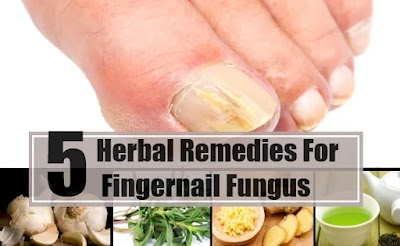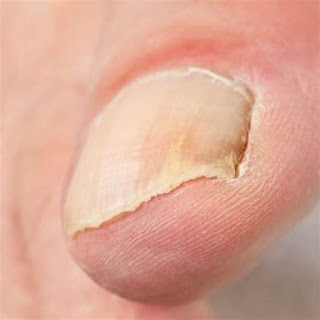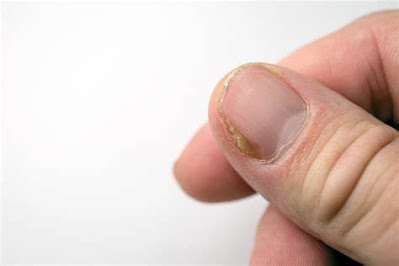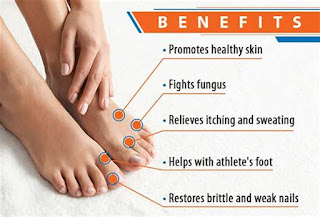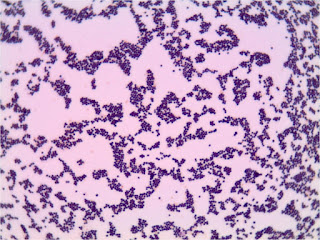Bacterial nail infections can be caused by various types of bacteria, and one common culprit is
Staphylococcus aureus. In this article, we will delve into the specifics of bacterial
nail infections caused by Staphylococcus aureus, including its causes, symptoms, and treatment options.
Causes of Bacterial Nail Infection by Staphylococcus aureus
Staphylococcus aureus is a type of bacteria that commonly resides on the skin and can cause infection when it enters the skin or nail bed through a cut, scratch, or other injury. Factors that can increase the risk of bacterial nail infection by Staphylococcus aureus include:
- Weakened immune system
- Poor circulation
- Frequent exposure to water or moist environments
- Previous nail trauma or injury
- Poor nail hygiene
It's worth noting that Staphylococcus aureus is a highly contagious bacteria and can easily spread from person to person through direct contact or contact with contaminated surfaces.
Symptoms of Bacterial Nail Infection by Staphylococcus aureus
Bacterial nail infections caused by Staphylococcus aureus can manifest in various ways, and the severity of the symptoms can vary from person to person. Some common symptoms of Staphylococcus aureus bacterial nail infection include:
- Pain or tenderness around the affected nail
- Redness, swelling, and warmth around the nail bed
- Discoloration of the nail, such as yellowing or darkening
- Pus or other discharge coming from the affected nail
- A foul odor
In severe cases, the infection may cause the nail to lift from the nail bed or even result in the formation of an abscess, which is a pocket of pus.
Treatment Options for Bacterial Nail Infection by Staphylococcus aureus
The treatment approach for bacterial nail infections caused by Staphylococcus aureus may involve a combination of medications and self-care measures. The specific treatment plan will depend on the severity of the infection and the recommendations of a healthcare provider. Some common treatment options include:
Oral Antibiotics
Oral antibiotics are often prescribed to treat bacterial nail infections caused by Staphylococcus aureus. Commonly prescribed antibiotics for this type of infection include dicloxacillin, cephalexin, and clindamycin. It's important to follow the prescribed dosage and duration of the antibiotics as instructed by a healthcare provider to ensure effective treatment.
Topical Antibiotics
Topical antibiotics, such as mupirocin or fusidic acid, may also be recommended to be applied directly to the affected nail and surrounding skin. These medications can help to eliminate the bacteria and prevent further spread of the infection.
Warm Soaks
Soaking the affected nail in warm water with Epsom salt or an antiseptic solution can help to reduce pain, swelling, and inflammation associated with the bacterial nail infection. This can be done for 10-15 minutes, several times a day, as recommended by a healthcare provider.
Nail Care and Hygiene
Proper nail care and hygiene are crucial in the treatment of bacterial nail infections caused by Staphylococcus aureus. This includes keeping the affected nail clean and dry, trimming the nail regularly and carefully, and avoiding picking or biting at the affected nail. It's also important to avoid sharing personal items, such as nail clippers or towels, with others to prevent the spread of infection.
In some cases, a healthcare provider may need to drain pus from an abscess or remove part or all of the affected nail to promote healing and prevent the infection from spreading.
Prevention of Bacterial Nail Infection by Staphylococcus aureus
Preventing bacterial nail infections caused by Staphylococcus aureus involves maintaining good hygiene and taking steps to reduce the risk of infection. Some tips for preventing bacterial nail infections include:
- Keeping hands and feet clean and dry
- Trimming nails regularly and carefully
- Avoiding sharing personal items, such as nail clippers or towels
- Wearing gloves when working with potentially contaminated materials
- Avoiding biting or picking at nails
- Avoiding exposure to moist environments, such as communal showers or pools
Conclusion
Bacterial nail infections caused by Staphylococcus aureus can be painful and uncomfortable, but with proper treatment and care, they can be effectively managed. If you suspect you may have a bacterial nail infection, it's important to seek prompt medical attention to prevent the infection from worsening or spreading. By taking steps to maintain good hygiene and reduce the risk of infection, you can also help to prevent bacterial nail infections caused by Staphylococcus aureus from occurring in the first place.
